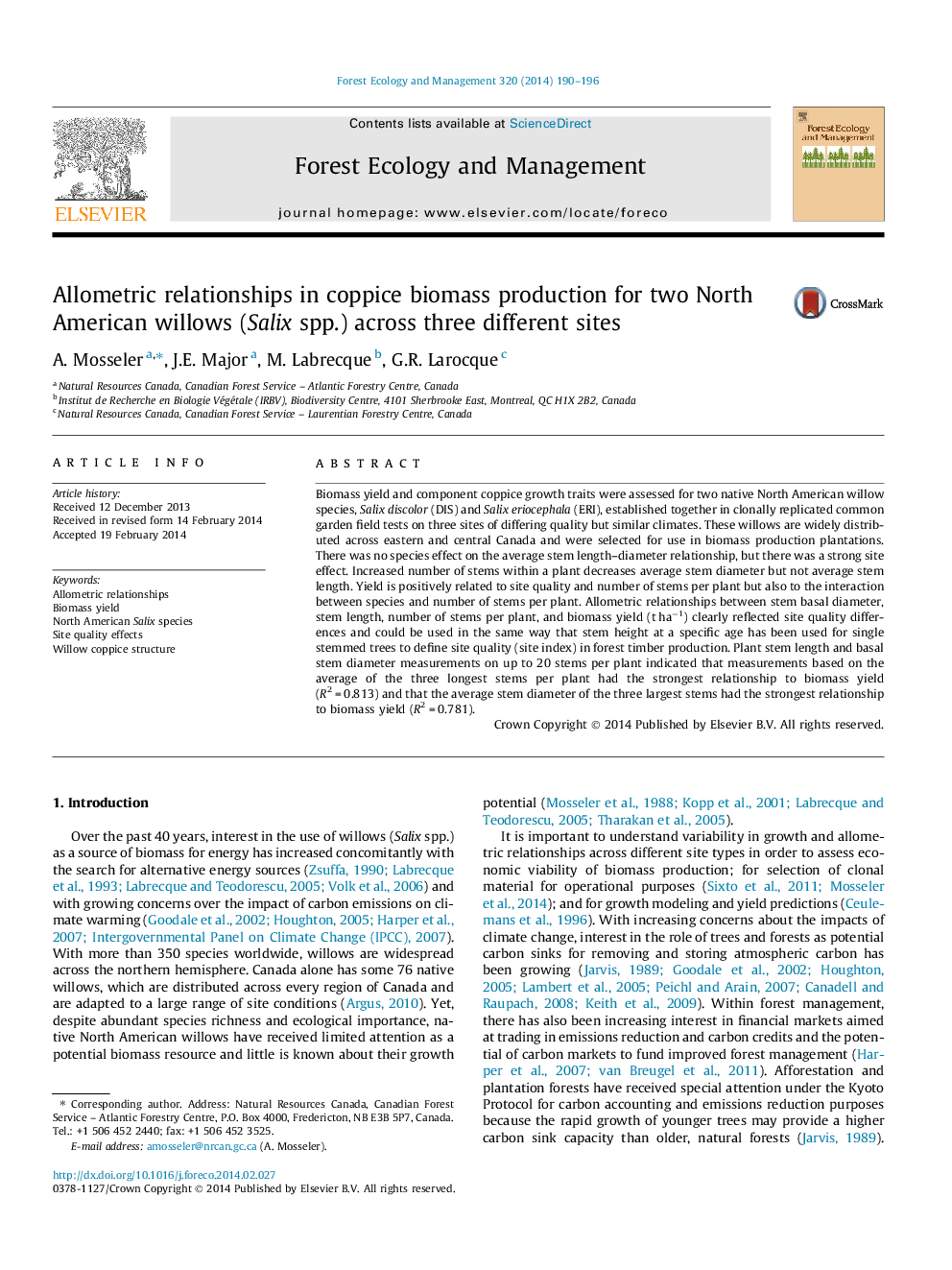| کد مقاله | کد نشریه | سال انتشار | مقاله انگلیسی | نسخه تمام متن |
|---|---|---|---|---|
| 86570 | 159198 | 2014 | 7 صفحه PDF | دانلود رایگان |

• Biomass yield and coppice structure quantified in three common garden field tests.
• Two native North American willows studied: Salix discolor and S. eriocephala.
• Allometric relationships affected more by site quality differences than by species effects.
• Results highlight practical limitations of generalized woody biomass yield equations.
• Good biomass yield predictions based on length of three longest stems per coppice.
Biomass yield and component coppice growth traits were assessed for two native North American willow species, Salix discolor (DIS) and Salix eriocephala (ERI), established together in clonally replicated common garden field tests on three sites of differing quality but similar climates. These willows are widely distributed across eastern and central Canada and were selected for use in biomass production plantations. There was no species effect on the average stem length–diameter relationship, but there was a strong site effect. Increased number of stems within a plant decreases average stem diameter but not average stem length. Yield is positively related to site quality and number of stems per plant but also to the interaction between species and number of stems per plant. Allometric relationships between stem basal diameter, stem length, number of stems per plant, and biomass yield (t ha−1) clearly reflected site quality differences and could be used in the same way that stem height at a specific age has been used for single stemmed trees to define site quality (site index) in forest timber production. Plant stem length and basal stem diameter measurements on up to 20 stems per plant indicated that measurements based on the average of the three longest stems per plant had the strongest relationship to biomass yield (R2 = 0.813) and that the average stem diameter of the three largest stems had the strongest relationship to biomass yield (R2 = 0.781).
Journal: Forest Ecology and Management - Volume 320, 15 May 2014, Pages 190–196